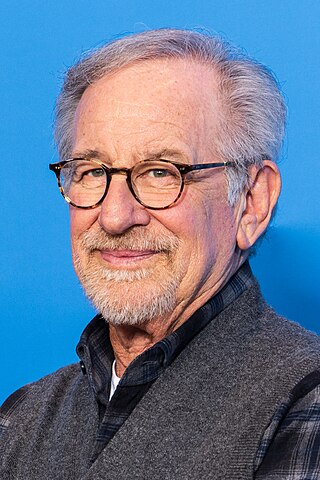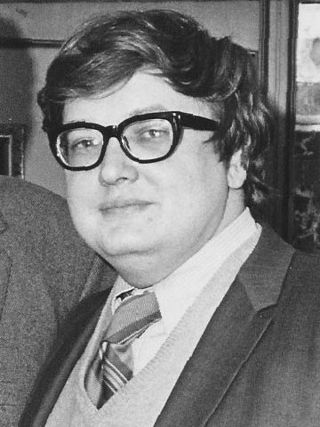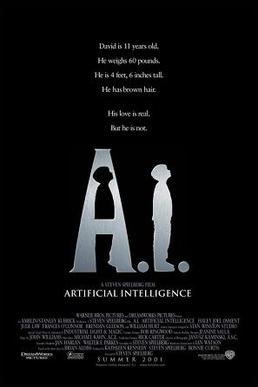
Steven Allan Spielberg is an American film director, producer and screenwriter. A major figure of the New Hollywood era and pioneer of the modern blockbuster, he is the most commercially successful director in history. He is the recipient of many accolades, including three Academy Awards, two BAFTA Awards, and four Directors Guild of America Awards, as well as the AFI Life Achievement Award in 1995, the Kennedy Center Honor in 2006, the Cecil B. DeMille Award in 2009 and the Presidential Medal of Freedom in 2015. Seven of his films have been inducted into the National Film Registry by the Library of Congress as "culturally, historically or aesthetically significant".

Saving Private Ryan is a 1998 American epic war film directed by Steven Spielberg and written by Robert Rodat. Set in 1944 in France during World War II, it follows a group of soldiers, led by Captain John Miller, on their mission to locate Private James Francis Ryan and bring him home safely after his three brothers are killed in action. The cast also includes Edward Burns, Tom Sizemore, Barry Pepper, Giovanni Ribisi, Vin Diesel, Adam Goldberg, and Jeremy Davies.

Thomas Jeffrey Hanks is an American actor and filmmaker. Known for both his comedic and dramatic roles, he is one of the most popular and recognizable film stars worldwide, and is regarded as an American cultural icon. Hanks' films have grossed more than $4.9 billion in North America and more than $9.96 billion worldwide, making him the fourth-highest-grossing actor in North America. He has received numerous honors including the AFI Life Achievement Award in 2002, the Kennedy Center Honor in 2014, the Presidential Medal of Freedom and the French Legion of Honor both in 2016, as well as the Golden Globe Cecil B. DeMille Award in 2020.

Roger Joseph Ebert was an American film critic, film historian, journalist, essayist, screenwriter, and author. He was a film critic for the Chicago Sun-Times from 1967 until his death in 2013. In 1975, Ebert became the first film critic to win the Pulitzer Prize for Criticism. Neil Steinberg of the Chicago Sun-Times said Ebert "was without question the nation's most prominent and influential film critic," and Kenneth Turan of the Los Angeles Times called him "the best-known film critic in America."

Meg Ryan is an American actress. She made her acting debut in 1981 in the drama film Rich and Famous. She joined the cast of the CBS soap opera As the World Turns in 1982. In the 1980s, Ryan appeared in Top Gun, Promised Land (1987) and the Rob Reiner-directed romantic comedy When Harry Met Sally... (1989), for which she earned a Golden Globe nomination.

Schindler's List is a 1993 American epic historical drama film directed and produced by Steven Spielberg and written by Steven Zaillian. It is based on the 1982 novel Schindler's Ark by Australian novelist Thomas Keneally. The film follows Oskar Schindler, a German industrialist who saved more than a thousand mostly Polish–Jewish refugees from the Holocaust by employing them in his factories during World War II. It stars Liam Neeson as Schindler, Ralph Fiennes as SS officer Amon Göth, and Ben Kingsley as Schindler's Jewish accountant Itzhak Stern.

A.I. Artificial Intelligence is a 2001 American science fiction film directed by Steven Spielberg. The screenplay by Spielberg and screen story by Ian Watson were based on the 1969 short story "Supertoys Last All Summer Long" by Brian Aldiss. Set in a futuristic society, the film stars Haley Joel Osment as David, a childlike android uniquely programmed with the ability to love. Jude Law, Frances O'Connor, Brendan Gleeson and William Hurt star in supporting roles.

You've Got Mail is a 1998 American romantic comedy film directed by Nora Ephron and starring Tom Hanks and Meg Ryan. Inspired by the 1937 Hungarian play Parfumerie by Miklós László, it was co-written by Nora and Delia Ephron. It tells the story of two people in an online romance who are unaware they are also business rivals. It marked the third pairing of Hanks and Ryan, who previously appeared together in Joe Versus the Volcano (1990) and Sleepless in Seattle (1993), the latter directed by Ephron. The film takes its name from the greeting AOL users receive when they get a new e-mail.

The Terminal is a 2004 American comedy-drama film produced and directed by Steven Spielberg and starring Tom Hanks, Catherine Zeta-Jones, and Stanley Tucci. The film is about an Eastern European man who is stuck in New York's John F. Kennedy Airport terminal when he is denied entry to the United States and at the same time is unable to return to his native country because of a military coup.

Congo is a 1995 American science fiction action-adventure film based on the 1980 novel by Michael Crichton. It was directed by Frank Marshall and stars Laura Linney, Dylan Walsh, Ernie Hudson, Grant Heslov, Joe Don Baker and Tim Curry. The film was released on June 9, 1995, by Paramount Pictures. It received negative reviews, but performed better than expected at the box office.

The Land Before Time is a 1988 animated adventure drama film directed and produced by Don Bluth from a screenplay by Stu Krieger and a story by Judy Freudberg and Tony Geiss, and executive produced by Steven Spielberg, George Lucas, Kathleen Kennedy, and Frank Marshall. The film stars the voices of Gabriel Damon, Candace Hutson, Judith Barsi and Will Ryan with narration provided by Pat Hingle. It is the first film in The Land Before Time franchise.

Munich is a 2005 epic historical drama film produced and directed by Steven Spielberg, co-written by Tony Kushner and Eric Roth. It is based on the 1984 book Vengeance by George Jonas, an account of Mossad assassinations following the Munich massacre.

Richard Nelson Corliss was an American film critic and magazine editor for Time. He focused on movies, with occasional articles on other subjects.

Steven Spielberg is an American director, writer, and producer. He is considered one of the founding pioneers of the New Hollywood era, as well as one of the most popular directors and producers in film history. He is also one of the co-founders of Amblin Entertainment, DreamWorks Pictures, and DreamWorks Animation.

Flags of Our Fathers is a 2006 American war drama film directed, co-produced, and scored by Clint Eastwood and written by William Broyles Jr. and Paul Haggis. It is based on the 2000 book of the same name written by James Bradley and Ron Powers about the 1945 Battle of Iwo Jima, the five Marines and one Navy corpsman who were involved in raising the flag on Iwo Jima, and the after effects of that event on their lives.

Richard Warren Schickel was an American film historian, journalist, author, documentarian, and film and literary critic. He was a film critic for Time magazine from 1965–2010, and also wrote for Life magazine and the Los Angeles Times Book Review. His last writings about film were for Truthdig.

We're Back! A Dinosaur's Story is a 1993 British-American animated adventure comedy film directed by Dick Zondag, Ralph Zondag, Phil Nibbelink, and Simon Wells from a screenplay by John Patrick Shanley. Based on the 1987 Hudson Talbott children's book of the same name, it tells the story of three dinosaurs and one pterosaur who travel to the present day and become intelligent by eating a "Brain Grain" cereal invented by scientist Captain Neweyes. The film was produced by Steven Spielberg's Amblimation studio and features the voices of John Goodman, Felicity Kendal, Charles Fleischer, Walter Cronkite, Jay Leno, Julia Child, Kenneth Mars, Yeardley Smith, and Martin Short.

Before the Devil Knows You're Dead is a 2007 American crime thriller film directed by Sidney Lumet. The film was written by Kelly Masterson, and stars Philip Seymour Hoffman, Ethan Hawke, Marisa Tomei, and Albert Finney. The title comes from the Irish saying: "May you be in heaven a full half-hour before the devil knows you're dead". The film unfolds in a nonlinear narrative, repeatedly going back and forth in time, with some scenes shown repeatedly from differing points of view. It was the last film directed by Lumet before his death in 2011.

Big is a 1988 American fantasy comedy-drama film directed by Penny Marshall and stars Tom Hanks as Josh Baskin, a pre-adolescent boy whose wish to be "big" transforms him physically into an adult. The film also stars Elizabeth Perkins, David Moscow, John Heard, and Robert Loggia, and was written by Gary Ross and Anne Spielberg. It was produced by Gracie Films and distributed by 20th Century Fox.




















